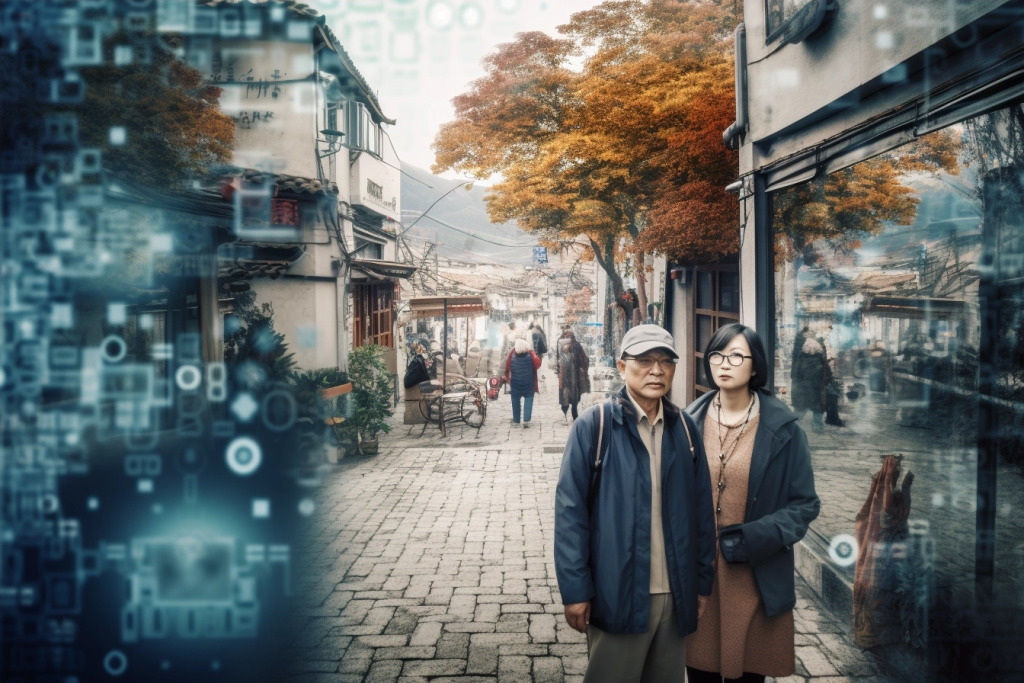As technology continues to advance at an exponential rate, artificial intelligence (AI) is becoming increasingly powerful in creating highly realistic images. A recent study has revealed that state-of-the-art AI-generated images can deceive the human eye to a significant degree (38.7%). This raises concerns about the ability to distinguish between AI-generated images and real photography.
The Current State of AI-Generated Images
Current state-of-the-art image generation models have made tremendous progress in creating images that are highly realistic and comparable to real photographs. The study highlighted the capabilities of these models, which can significantly deceive human perception.
Key Findings
- High-quality AI-generated images: Current state-of-the-art image generation models can produce high-quality images that are difficult to distinguish from real photographs.
- Limitations and challenges: Despite the impressive capabilities of current models, there are still limitations and challenges associated with generating accurate and lifelike images.
Applications of AI-Generated Images
The study also explored the numerous applications of AI-generated image creation (AIGC), including:
Advertising Campaigns
- Personalization: AI-generated images can be used to create personalized advertising campaigns that are tailored to individual customers.
- Increased engagement: High-quality AI-generated images can increase customer engagement and drive sales.
Product Catalogs
- Product showcasing: AI-generated images can be used to showcase products in a more realistic and engaging way.
- Reduced costs: AI-generated images can reduce the costs associated with product photography.
Gaming Industry
- Game environments: AI-generated images can be used to create highly realistic game environments.
- Improved player experience: High-quality AI-generated images can improve the overall player experience.
Societal Implications of AIGC
While AIGC has numerous applications and benefits, there are also significant societal implications that need to be addressed. The study highlighted several concerns associated with the broader impact of AIGC:
Risks Associated with AI-Generated Images
- Spread of false information: AI-generated images can spread false information, which can lead to harm to individuals or organizations.
- Inciting violence: AI-generated images can incite violence and pose a serious threat to factual information.
Mitigating the Negative Impacts of AIGC
To mitigate the negative impacts of AIGC, researchers and practitioners in the field need to develop strategies to address these concerns. This includes:
Developing Methods to Identify AI-Generated Images
- Image detection: Developing methods to detect AI-generated images can help mitigate the spread of false information.
- Transparency: Providing transparency about the use of AIGC technology is essential for responsible development and use.
Establishing Guidelines for Ethical Use
- Ethics guidelines: Establishing ethics guidelines for the use of AIGC technology is crucial to ensure responsible development and use.
- Public awareness: Raising public awareness about the existence and potential impact of AIGC technology is essential for responsible development and use.
Positive Impacts of AI-Generated Images
While there are significant concerns associated with the broader impact of AIGC, there are also positive impacts that need to be considered. The study highlighted several benefits associated with AI-generated images:
New Opportunities for Artists and Designers
- Artistic expression: AI-generated images can provide new opportunities for artistic expression.
- Improved quality: High-quality AI-generated images can improve the overall quality of art and design.
Future Research Directions
The study’s findings point to several academic directions that could be explored in the future:
Developing Better Image Generation Models
- Model improvement: Developing better image generation models is essential for improving the overall quality of AIGC technology.
- Addressing issues related to data imbalance, long-tail problems, and bias: Addressing these issues can help ensure that AI-generated images are fair and unbiased.
Using AI to Detect AI-Generated Images
- Image detection: Developing methods to detect AI-generated images is essential for mitigating the negative impacts of AIGC.
- Transparency: Providing transparency about the use of AIGC technology is crucial for responsible development and use.
Conclusion
The current state-of-the-art image generation model can significantly deceive human perception, making high-quality AI-generated images comparable to real photographs. It is a significant challenge for researchers to develop secure and reliable AIGC systems for real-world applications while ensuring responsible and ethical use of AIGC technology in the future.
Prioritizing Responsible Development and Use
Prioritizing responsible development and use of generative AI is essential to ensure a positive impact on society. This includes:
Developing Secure and Reliable Systems
- Secure systems: Developing secure and reliable AIGC systems is crucial for ensuring responsible and ethical use.
- Transparency: Providing transparency about the use of AIGC technology is essential for responsible development and use.
Establishing Guidelines for Ethical Use
- Ethics guidelines: Establishing ethics guidelines for the use of AIGC technology is crucial to ensure responsible development and use.
- Public awareness: Raising public awareness about the existence and potential impact of AIGC technology is essential for responsible development and use.
By prioritizing responsible development and use, researchers and practitioners in the field can help ensure that AIGC technology has a positive impact on society.










